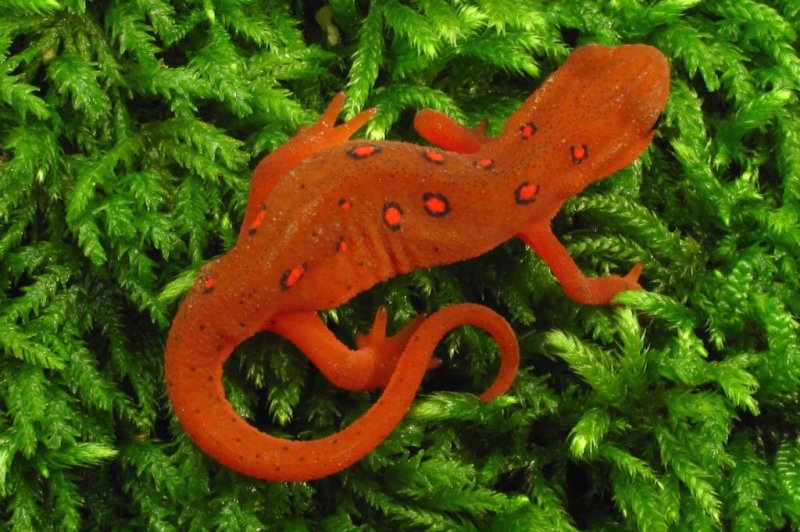The red spotted newt is one of many amphibians in decline. Photo by Alan Cressler/USGS
BOULDER, Colo., May 23 (UPI) -- A new study led by scientists with the U.S. Geological Survey confirms the ongoing decline of amphibians around the world.
Researchers blame the continued decline of frogs, salamanders, newts and other amphibians on a range of factors. Unfortunately, there is no central problem or single corresponding solution.
While every part of the United States continues to experience a decline in amphibian populations, the major threats vary from region to region.
The negative effects of pesticide use are especially pronounced east of the Colorado River, while human development and disease are driving the decline east of the Mississippi River. In the South and the West Coast, climate change is hampering amphibian health.
"Implementing conservation plans at a local level will be key in stopping amphibian population losses, since global efforts to reduce or lessen threats have been elusive," Evan Grant, a USGS research wildlife biologist, said in a news release. "This research changes the way we need to think about amphibian conservation by showing that local action needs to be part of the global response to amphibian declines, despite remaining questions in what is causing local extinctions."
Grant is the lead author of the new study, published this week in the journal Scientific Reports.
The latest analysis suggests amphibian populations are declining at a rate of 3.79 percent per year. That's roughly in line with previous USGS findings. Should such a decline continue, many amphibian species will become extinct across large portions of the U.S.
"Losing 3 or 4 percent of amphibian populations might not sound like a big deal but small losses year in and year out quickly lead to dramatic and consequential declines," added study co-author Michael Adams, lead scientists with the USGS Amphibian Research and Monitoring Initiative.















